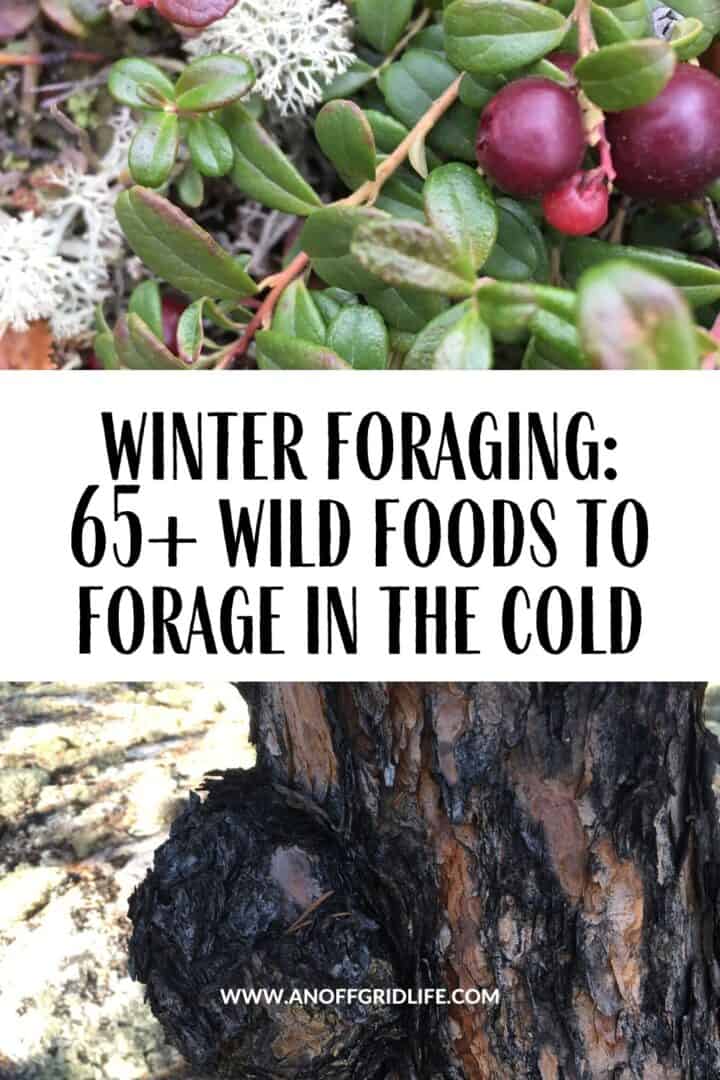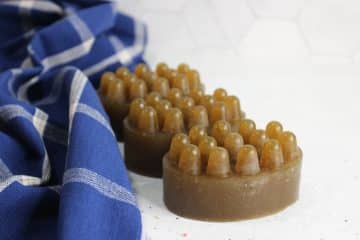Are you ready to take your wilderness self-reliance skills up a notch and enjoy nature's bounty, even in winter? Winter foraging may sound difficult, especially in a northern climate.
The cold temperatures, snow, and ice can make it hard to find edible vegetation. However, as we've found over the last ten years, it is indeed possible to forage for wild herbs, edible greens, fungi, nuts, seeds, and more.
Learn more about foraging in winter and check out my list of over 65 wild foods to forage in winter.
Reasons for Foraging in Winter
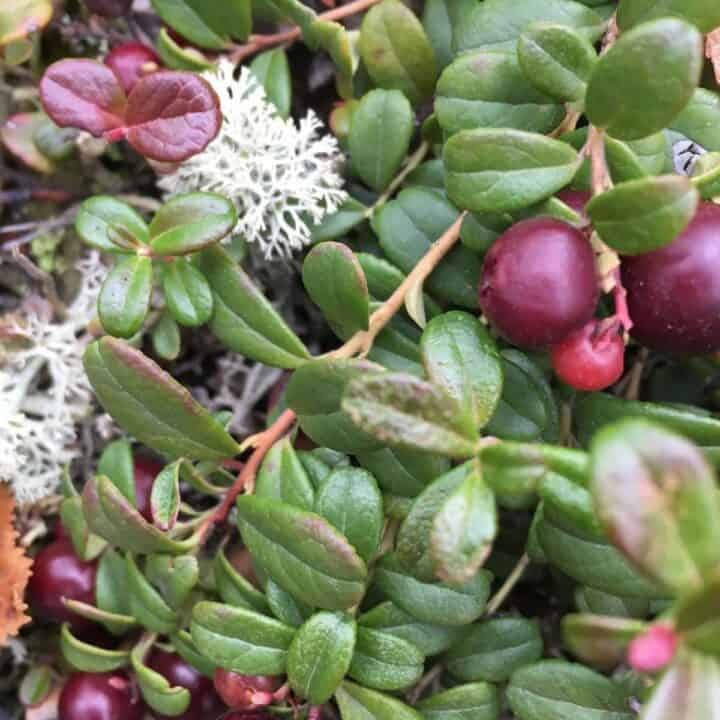
Foraging in late winter and/or early spring can be an exciting and challenging activity that provides educational opportunities for families, particularly homeschoolers.
The truth is that we do most of our foraging for wild greens, common weeds, tree bark, and berries during the warm summer months in Canada's Northwest Territories.
However, we recently completed a homeschool study on the indigenous people of Canada. And we learned that mother nature has been providing staple food for people in our area all year round for hundreds (if not thousands) of years.
Yes, trying to gather wild foods in winter in a harsh climate is hard work. Yet our family has found that it is also very rewarding as it helps us learn new skills.
Self-Reliance
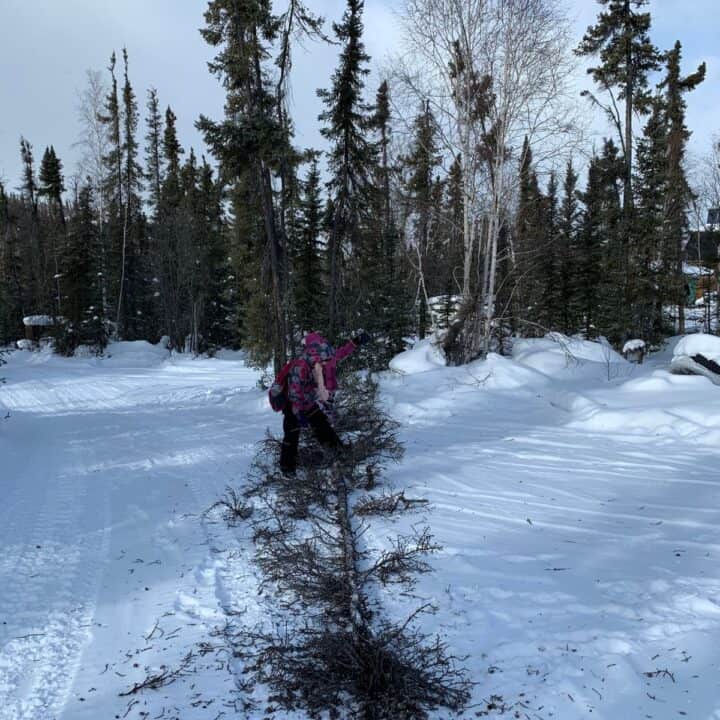
Foraging in winter helps improve your self-reliance skills. Finding food for yourself, whether mushrooms, needles, or nuts from a pine tree or frozen berries, means you don't need to buy those items at a store.
In addition to spending time together outdoors as a family and learning important bushcraft survival skills, foraging in winter may also introduce you to local wild foods to help fill your pantry. After all, sometimes your fall harvest falls short.
Foraging is an activity that gives us a sense of independence and accomplishment. Especially when we find something to add to our herb stores or freezer.
And foraging offers a great way to spend more time together outdoors during the deep snow days. Plus, it's also a free family activity.
Teaching and Learning Foraging with Kids
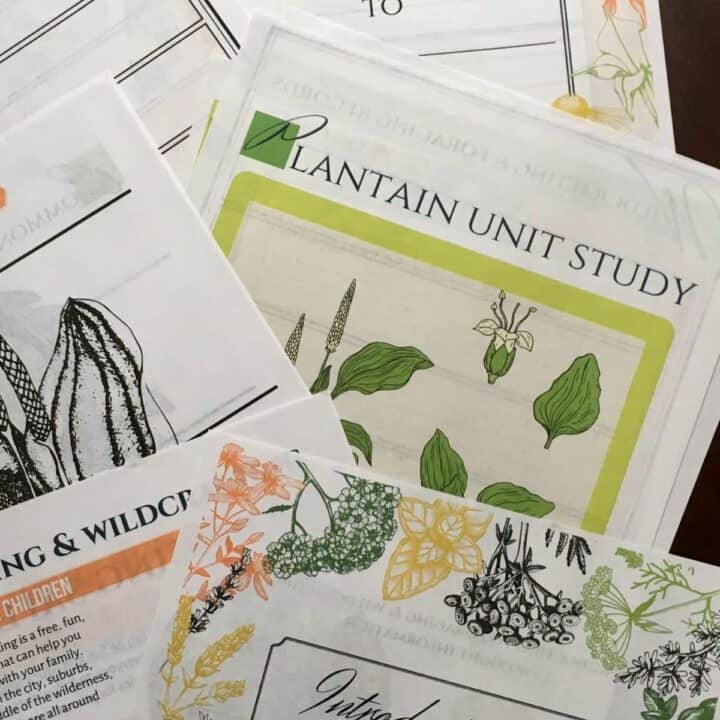
As a homeschooling mom, I'm always looking for hands-on lessons to solidify the lessons learned in our bookwork.
Now, we do use printables and books to learn about medicinal and culinary herbs.
And I've found some awesome online herbal and foraging classes for my middle schooler.
Yet a big part of using foraging to teach the kids involves getting out there and doing it!
So last winter, like many previous winters, we decided to head out into the natural world in mid-February as part of our homeschool day.
And honestly, February and March are fun winter months in the Territories. The days get longer once the winter solstice has passed. And it's more cheerful than the shorter, grey days of early winter.
We bundle up and headed out!
Grab Your Winter Foraging Journal Today
Foraging is Healthy for the Body and Mind
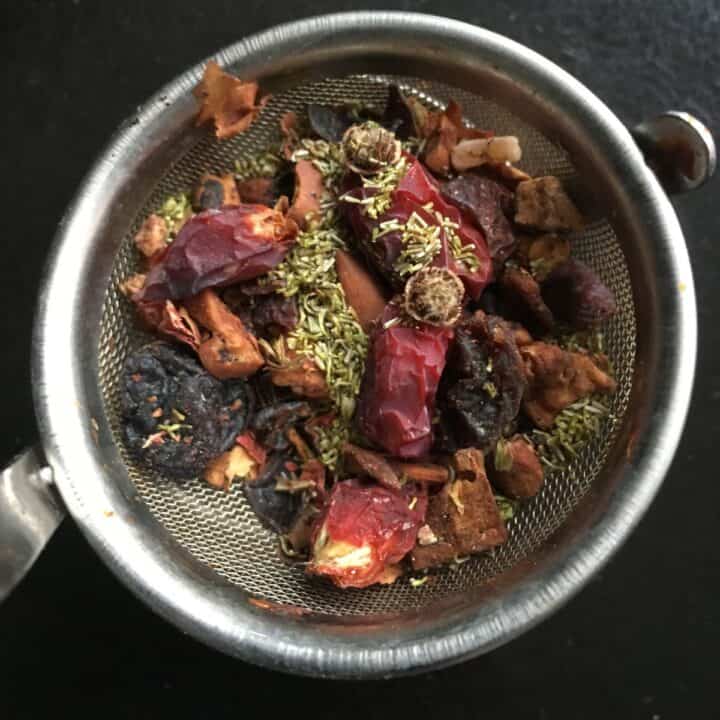
Foraging is a great way of connecting with nature and learning about your local environment while getting exercise. We're lucky because we live in a boreal forest. So we just put our boots on, grab snowshoes and head out our front door.
Fresh air and activity always seem to clear my mind - whether it is sunny or not!
Where and When to Look for Wild Edibles in Winter
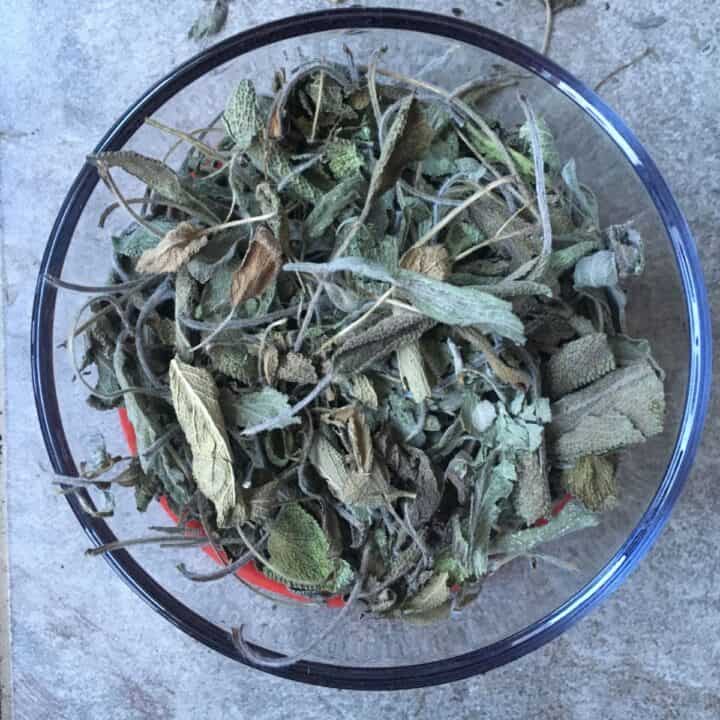
Although the middle of winter may not seem like the ideal time to forage for edible wild plants, it is possible to find food during the winter season in North America.
No matter where you live, you'll find at least a few herbs, berries, and other edible plants after the first frost.
Look for evergreen trees such as pine and juniper.
Keep your eyes peeled for abandoned apple orchards and forage for apples.
Visit wooded areas where mushrooms and lichens may grow.
You could also find nuts like hickory, walnuts, and hazelnuts that drop from the trees.
Remember, don't overharvest in winter. Leave some for the wildlife too, and some to keep the tree, plants, etc., healthy for the future.
If you know where to look, you'll also find berries, root vegetables, winter greens, and a few other common plants during the winter.
If you live in the southern part of Canada and/or the United States (and even the Pacific Northwest) you might not even get snow cover in the winter.
In that case, you'll find winter foraging easier than we do in the subarctic.
That said, I know people foraging in winter for rose hips, conifer needles, and other medicinal plants in the northern provinces and territories.
Preparing for a Winter Forage
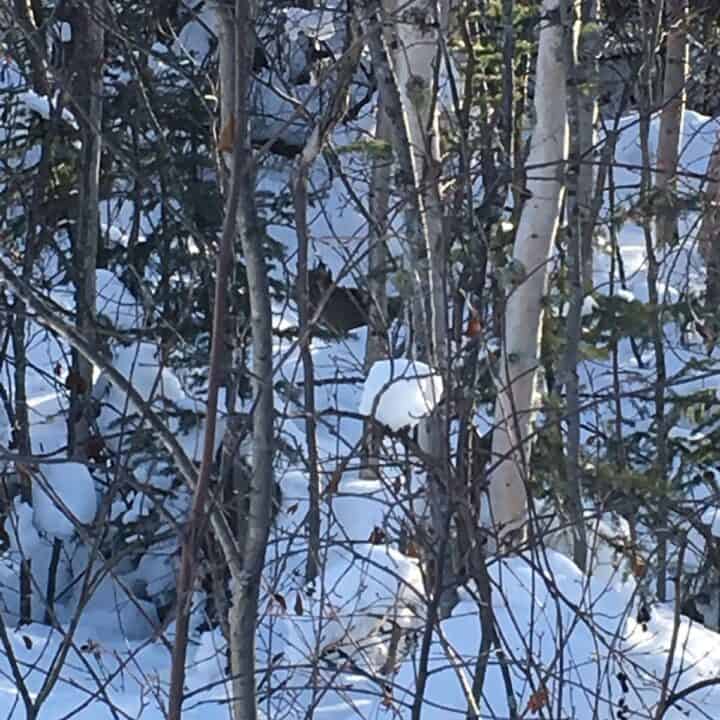
Choose a sunny day when everyone is feeling good - -40 temperatures, sore throats, headaches, and foraging don't mix well. (Ask me how I know.)
Before heading out on your foraging journey, it is important to research, plan, and take the proper safety precautions.
Make sure to dress warmly and in layers, as temperatures can drop drastically during winter.
Additionally, it is important to learn about the local laws and regulations regarding foraging to be mindful of prohibited areas or activities.
Lastly, be sure that all members of the family know what they should and should not pick during the trip.
Clothing
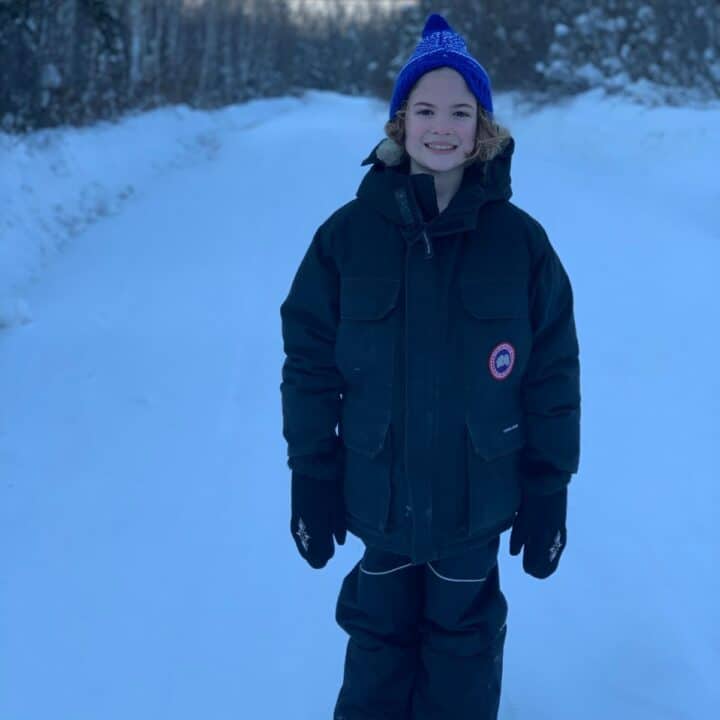
Heading out to go foraging in the winter can be a fun and educational experience for the whole family.
To keep warm in cold climates, make sure to dress appropriately with these items:
- Warm jacket or coat
- Sturdy boots
- Thick hat and scarf
- Winter gloves
- Long insulated winterproof pants
- Sturdy warm waterproof boots with footwarmers and extra socks if needed
- Gloves - this makes it easier to grab small berries, etc. Add small hand warmers if needed
Foraging Tools
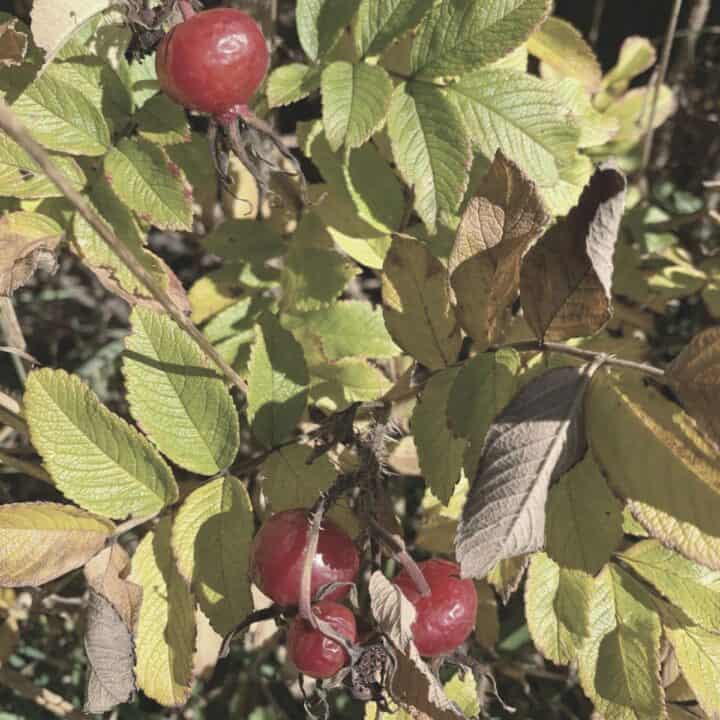
When going foraging in the wilderness for food, herbs, berries, and fungi in cold weather, make sure to take the following items with you:
- A pocket knife - I like this one from Morakniv
- Hat and scarf
- First aid kit - we use the ones from our Think Outside Boxes because it is small and fits nicely into the kids’ knapsacks
- Flashlight/headlamps (living in the north where we get just a few hours of daylight in winter, we each have our own)
- Winter parka and layers of clothing (number of layers depends on the temperature)
- Canvas foraging cross-body bag or backpack
- Kitchen-sized garbage bags for larger twigs, branches
- Ziploc freezer bags to keep items separate if you’re foraging several things at once
- Firestarter equipment and materials
- Sometimes we bring a very small collapsible portable camp stove, hot chocolate packs, tea bags, and travel mugs
- Granola bars or other backpack breakfasts or snacks
The main thing is to plan and prepare for extremes, especially if you're foraging in northern climates, as our family does.
Best Wild Edibles to Forage in Winter
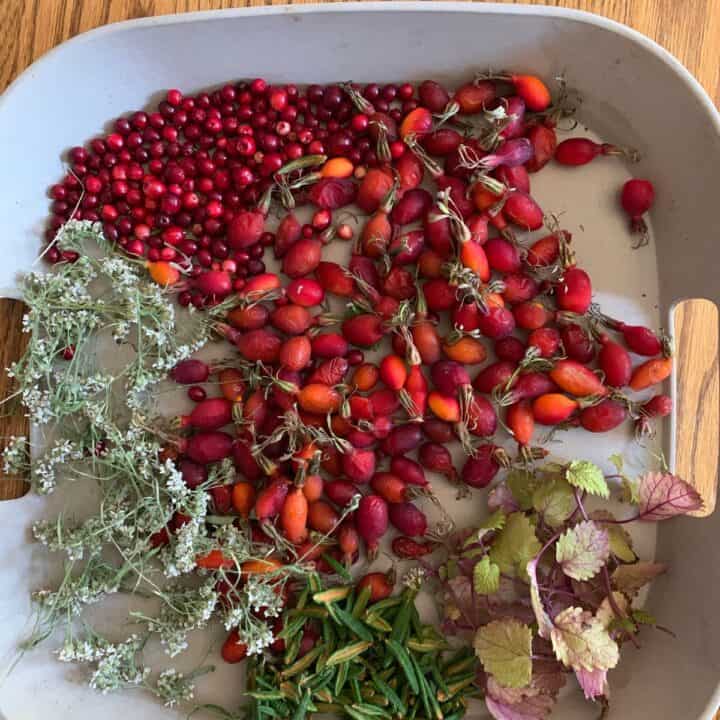
Over the years, I've collected quite a lot of information about foraging during the winter in the far north. Some of this information came from long-time local foragers, and other information from reports and books.
Between the two, I've found almost 70 amazing wild food sources that survive through the winter months in northern Canada.
Some of these may hide under the snow. Or they sprout from tree trunks.
Sometimes, like finding cattail roots, we must dig down along the lakeshore in the late fall. It's always an adventure.
Take a look at this list - some of the items hiding in plain sight might surprise you!
67 Wild Foods to Forage in Winter
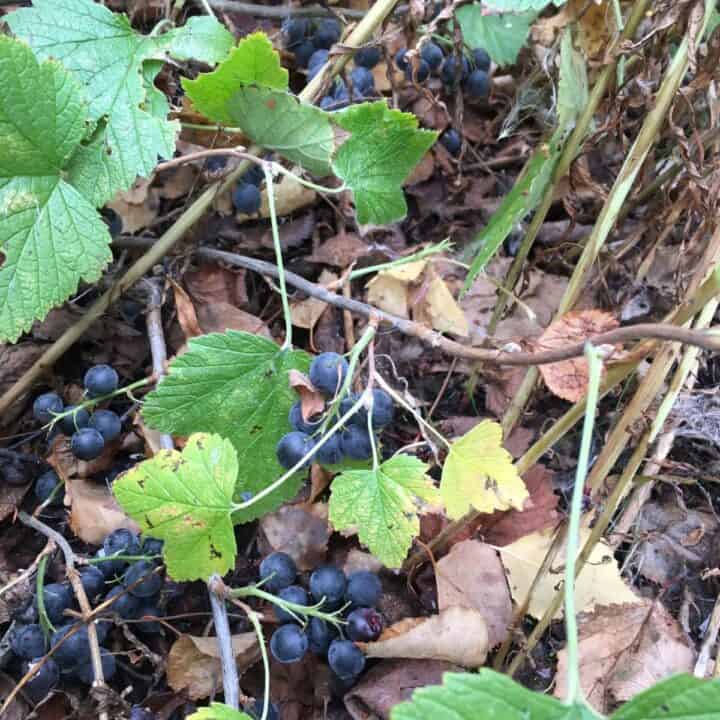
- Pine needles - don't gather them from the forest floor - shake fresh needles gently from a small tree instead and make pine needle tea
- Pine cones
- Pine nuts https://insteading.com/blog/winter-foraging/
- Ponderosa pine
- Hemlock (NOT the poisonous green. The tree.)
- Spruce needles
- Fir needles
- Redwood needles (they're a good source of vitamin C
- Oak Trees (they offer more than just acorns)
- Birch bark (use the soft inner bark of birch trees. Break the bark and grind it down to make birch bark flour for cookies and bread)
- Birch twigs (for birch bark tea)
- Birch sap (for syrup, or drink it plain, or for flavoring tea)
- Walnut sap
- Black walnuts
- Maple trees
- Maple sap - tap the maple trees in
- Mountain Ash Use frozen berries to make jams and jellies
- Acorns (can be ground down into acorn flour to make bread, cupcakes, muffins and more)
- Maple tree seeds
- Dock seeds (for flour)
- Rosehips (use rosehips for oil, syrup, and preserves)
- Cranberries - high brush
- Cranberries - low brush
- Chokeberries
- Cloudberries
- Hawthorn berries
- Juniper Berries (these are a good substitute for recipes that call for rosemary. I use them in my Ptarmigan Stew recipe and also with various Venison Dinners and Rabbit Stew too.)
- Winterberries (aka teaberries or checkerberries)
- Chaga
- Labrador tea
- Soapberries
- Bearberries/Kinnickkinnick
- Partridgeberries
- Watercress
- Burdock roots
- Usnea (old man’s beard)
- Reindeer Moss
- Winter Chantarelles/Yellowfoot Chantarelles
- Oyster Mushrooms
- Turkey Tail Mushrooms
- Dulse
- Wild onions
- Sorrel
- Wild radishes
- Wild garlic
- Garlic mustard
- Mustard
- Dandelion root
- Goldenrod
- Willow bark
- Curly Dock
- Cattails
- Horse chestnuts
- Chickweed
- Chicory
- Wild onions
- Wild plums (may be frozen on the tree)
- Crabapples (may be frozen on the tree - good for crabapple jelly or sauce)
- Grapes (frozen on the vine)
- Duck potatoes (wapato) We read about these when studying the Lewis & Clarke expedition
- Ground nuts
- Goosefoot, part of the lambsquarter family and aka Wild quinoa
- Pickleweed - part of the goosefoot family. Grows all year long in salt-water areas.
- Strawberry Blight
- Bunchberry aka dogwood
- Balm of Gilead, aka poplar buds or cottonwood https://joybileefarm.com/forage-in-winter/
- Larch or Lupine
What Did I Miss?
Living close to nature, spending time together outdoors, and learning to become more self-reliant. These are some of the reasons we choose to forage for wild foods in winter.
Now I know this isn't (yet) an exhaustive list. And I'm curious. What do you forage in winter?
Drop a comment and let me know. I'll update this list regularly and would love to add your contribution!
Like this post? Save it, share it, and read it!
